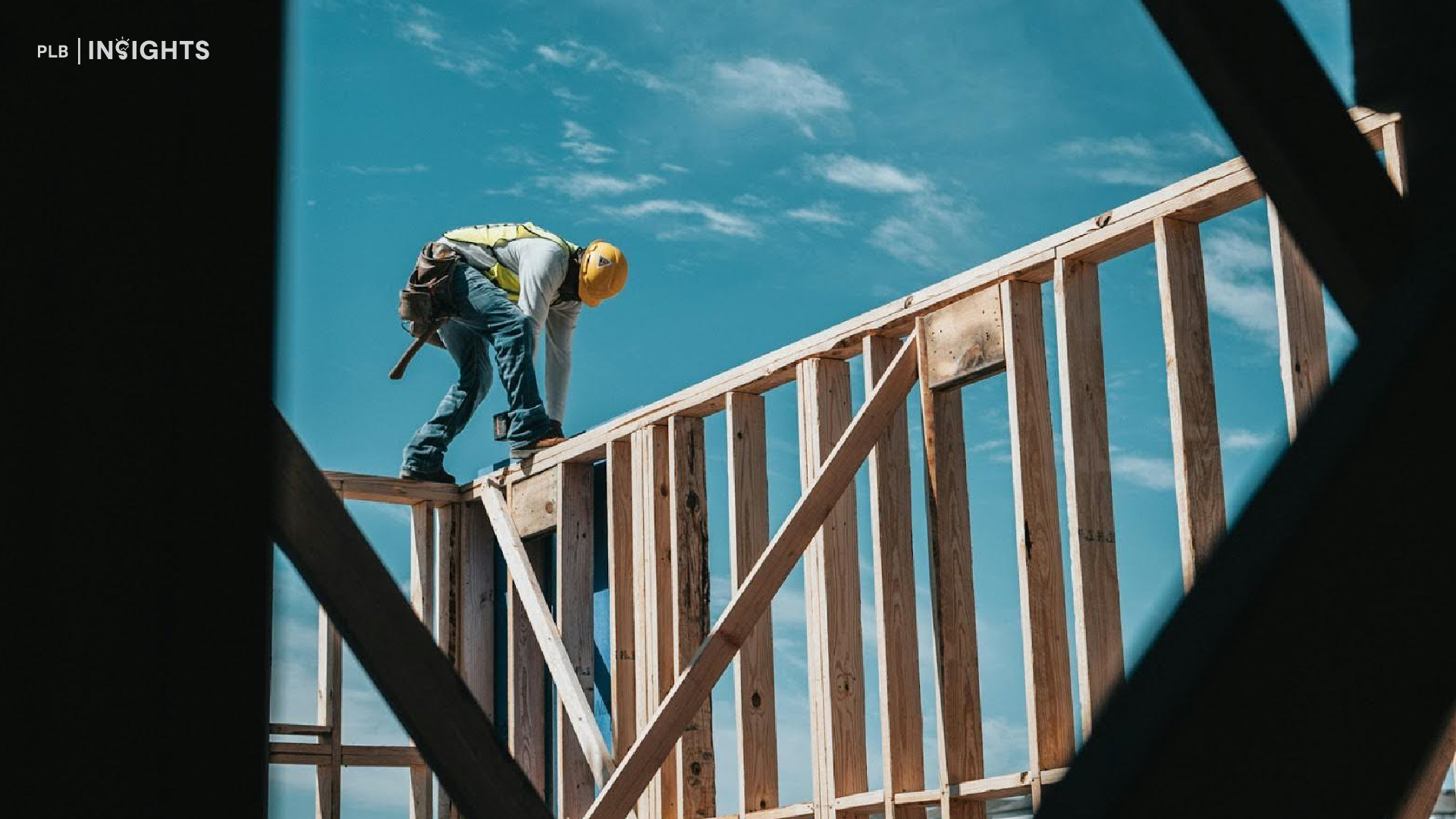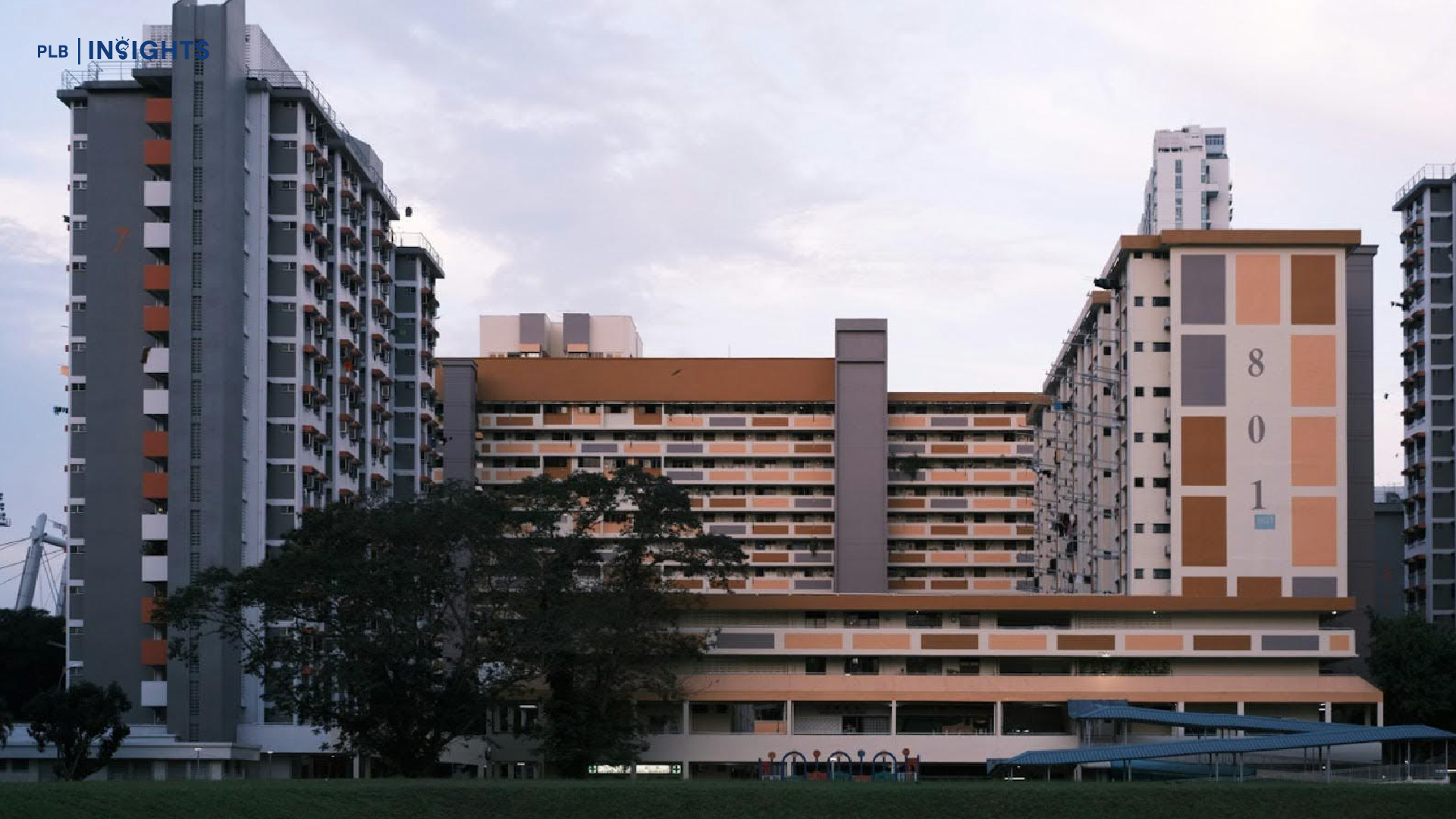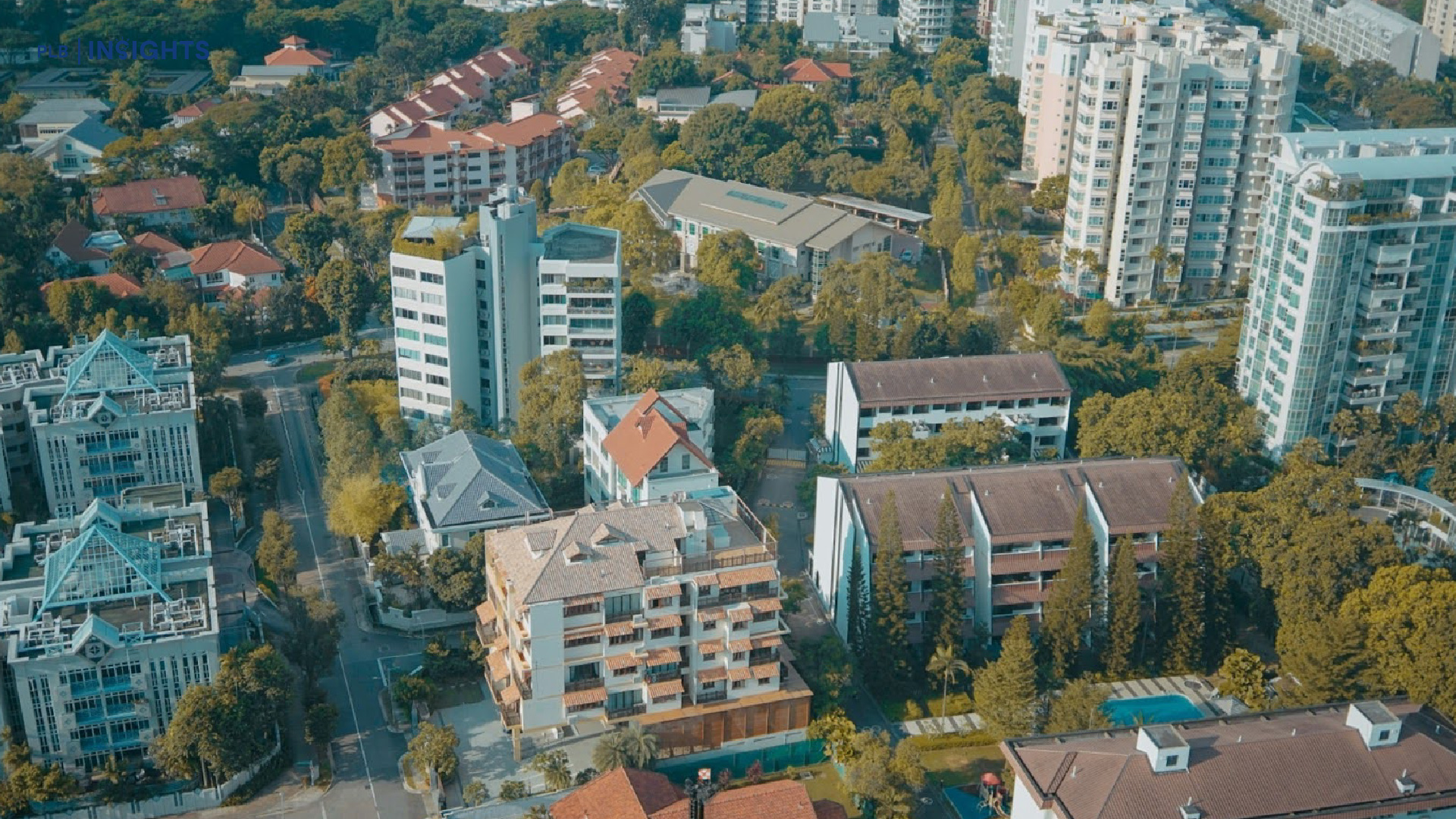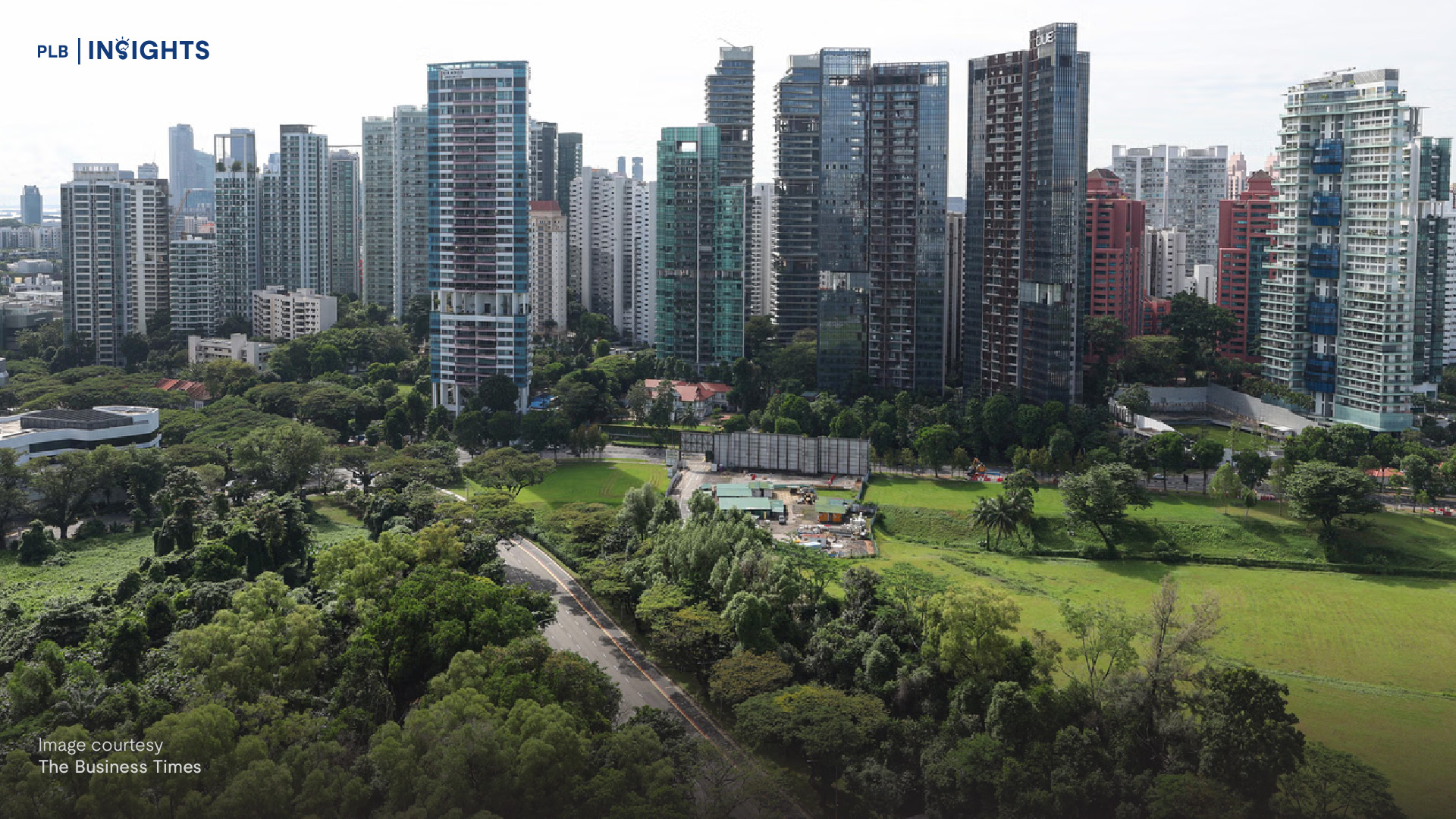

What would a sustainable Singapore look like?
A Green Singapore? How about minimal carbon emissions and leading the stage for green movements? For the environmentally-conscious people, this may just be Singapore in the foreseeable future. Leaders of the country have been investing a great amount of time researching on Clean and Green initiatives, with more implementations underway. Shifting from the ideal of a “Cleaned” country to “Clean” country is the main proposition that the government is going after. However, to achieve such a concept would require additional innovation and cooperation from all economic agents, businesses and the residents themselves, which given the environmental concerns globally today, would not seem that hard to realise. Alongside such initiatives is also the big plan, Singapore’s Green Plan 2030 that has just been launched by the authorities earlier in February.

Green Plan 2030, Courtesy SG Green Plan
Power, Process and People are the 3 most important factors to achieving success of Singapore’s efforts to ensure sustainability in the long term. Short-term solutions are hardly impactful. Singapore’s Green Plan 2030 aims to set the country back on track for an ecologically sustainable and clean Singapore after recovery from the recent COVID-19 pandemic that practically swept the whole world off their national development tracks.
Let us first list down the 3 most crucial factors that would contribute very much to the success of this national sustainability movement initiated by the government.

Power. Because of the issue of scarcity for land (Singapore only has a land area of 718.3km²), it is important that the government concentrates a good amount of its resources on improving the performance of energy-consuming systems.
Process. Sustainable districts such as Tengah and Punggol Digital District can serve as pilot schemes for urban system innovation which can then allow government agencies and partners to test out a line of policies and actions that can be taken to tackle the problem of climate change and global warming. Such test beds will allow for the assessment of sustainability efforts before gradually rolling out to the rest of the nation.
People. The most important out of all 3 factors would definitely have to be the part that the people play. To be able to see the difference, it is vital that the population would change up their individual lifestyles to better complement the sustainability efforts deployed by the different economic agents. If the residents refuse to reduce their carbon footprint, no amount of subsidies and incentives will be able to bring about a change in the betterment of the environment.
The Green Plan will build upon the foundations that have already been set by sustainability policies rolled out in the past decades, allowing for a smoother transition into green efforts and adoption of sustainability practices. The perspective is to get the working population to work in greener buildings that live up to the sustainability standards set by authorities. Other new initiatives would include encouraging greener commute options – promoting car-lite communities by expanding existing networks of cycling paths, which is to treble by 2030. Rail networks are to span 360km on top of the highly raved about transition to cleaner vehicular emissions and the gradual introduction of electric vehicles (EVs) on the roads. For residential areas, more energy efficient infrastructure will be put in place such as the district cooling system which was previously implemented in the Marina Bay area back in 2006.

The SG Green Plan 2030 Courtesy GreenPlan Gov
Singapore has been noted to have the highest rate of air-conditioners installed in the South-east Asia region, and we are expected to grow by 73% in usage between 2010 and 2030. This high dependency that we have on our air conditioners would contribute to the further increase in urban generated heat, especially in densely populated areas. To counter this high rate, the government has been putting in more resources into piloting energy-efficient technologies that can help with urban heat management. This includes the district cooling systems like the one implemented in the Marina Bay district in 2006 which allowed for energy savings of up to 40 per cent, according to SP Group.
Take for example Tengah, aimed to be Singapore’s most ambitious smart and sustainable new town. The Housing Board, in collaboration with energy utilities provider SP Group, will implement Singapore’s first large-scale residential centralised cooling system there.

Singapore’s first District Cooling system in Marina Bay Courtesy Straits Times
Such collaborations and initiatives will aid Singapore in achieving its pledge to cap its emissions by 2030 and halve them by 2050. Since geographical constraints make it challenging for Singapore to adopt large-scale renewable energy solutions, this makes improving the performance of energy-consuming systems critical.

Tengah, the Forest Town Courtesy Straits Times
Let us now dive into a further insight on the point of centralised cooling systems in residential areas. Tengah, a new town which is scaled at around 220 to 300 HDB blocks, will be similarly equipped with the centralised cooling system adopted at the Marina Bay area. However, it will be one that is rendered more appropriately for mainly residential usage instead of for commercial buildings. Through centralised cooling, the government foresees that lifetime household energy consumption in Tengah will be reduced by 30 per cent as compared to current levels of consumption. Residents will also be equipped with systems and track records for them to monitor their own energy usages and make more informed decisions. With the reduction in energy consumption, the energy saved can then be channeled into powering other HDB estates around the area. Thus with such a measure in place, Tengah will soon become a self-sustainable, smart town and one of its own league, and we will definitely see the influx of demand for housing in the estate, which we will touch on in a bit.
Another smart and self-sustainable town that the state planned on developing would be Punggol. The upcoming Punggol Digital District, which is developed by national industrial infrastructure developer JTC Corporation, is slated for completion by 2023. This area will be equipped with a smart energy grid that can lower energy usage, distributing green energy such as solar power seamlessly across the district and detect abnormal energy consumption. Serving as a testbed for energy resource sustainability, buildings will be 30 per cent more energy-efficient than conventional commercial buildings, thanks to the sustainable design and smart optimisation that is enabled by the district’s open digital platform. In addition, district-wide data will also be collected through its own network of sensors. Data collected would include that of environmental, lifts, lighting and occupancy, etc. These data collected will then allow for JTC to fully optimise available resources and be alerted to any outliers in real-time. New concepts of living, working and service delivery will also be formulated in the midst of all the data collection.

Punggol Digital District map Courtesy Straits Times
With the URA’s plan for development of the Punggol Digital District (PDD) and its gradual transition into a car-lite town, Punggol will become the first smart and integrated district of the new generation. Punggol, being a relatively young estate, will continue seeing an influx of young demographics in the coming years, especially with the PDD housing key industries such as cybersecurity and digital technology and also Singapore Institute of Technology (SIT)’s campus. The PDD is reminiscent of California’s Silicon Valley in terms of the congregation of digital talent in the foreseeable future.
What does this mean for property sales
Tengah will be home to more families of younger demographics. This is also one of the reasons why Tengah was chosen to pilot the smart and sustainable living model. And if all goes according to plan given the current delays, residents can start moving in by 2023. In a recent media survey conducted, it was found that 9 in 10 Singaporean millennials are willing to make personal sacrifices to support climate change mitigation efforts. This would all come one full circle with Tengah being designed to make it as easy and socially desirable as possible for residents to reduce their carbon footprint. With more and more millennials and younger generations soon to be stepping into the real estate market, we may just see a higher acceptance rate of sustainability efforts.
With all these future developments in the making, this will in turn lead to the residential areas located near these commercial and industrial places becoming more desirable to live in as the environmental conditions will be controlled and residents need not fear of greenhouse gases affecting the general health of residents. Not to mention, many more investors and corporations will be spurred and incentivised to set up shop in such sustainable and clean areas. To sum things up, we would definitely be seeing an increase in demand for housing in both Tengah and Punggol in the years ahead, and may contribute to an increase in price for its heightened technological advancements.
What can we expect for the older estates
Climate policy observer Nor Lastrina Hamid, co-founder of the Singapore Youth for Climate Action said that she is heartened by the efforts of many government agencies to call upon change that is needed for the progression towards sustainable living in our country.
“What I am also optimistic about is this promise to transform Jurong Island into a sustainable energy and chemicals park. Given that Jurong Island is home to many petrochemical industries, it makes me curious too what the plans are for Jurong Island in the coming years,” she said, adding that she will be keeping a close watch on developments in the area of Jurong Island.
With estates such as Tengah prospected to gain more interest among the younger generation, so would the neighbouring older estates. Furthermore, with Jurong Island becoming also one of the focus of the state to redevelop into a sustainable industrial park, it means for cleaner air and environment. Being able to live within close proximity to estates that are smart and efficient would definitely boost housing demand – who wouldn’t like to live near somewhere with fresh air that is not coated with industrial dust?
For a more thorough analysis of how older estates also have a part to play in the sustainability plan, visit here.
Electric Vehicles, are they a yay or nay?
Another segment of the Singapore Green Plan worth commenting on is that for greener emissions on the roads. Singapore has seen greener vehicle emissions in recent years with the emergence of the fully electric car sharing platform BlueSG. Besides that, there are other companies such as Car Club Singapore and Tribecar that have also pledged commitment to greener cars for their patrons in the years to come. However, to take things up a notch higher, the Singaporean government has given the green light for major EV production company, Tesla, to enter the Singaporean automobile market, led by famed entrepreneur Elon Musk. Previously, the state felt that the entry of Tesla would not lead to a solution for climate change but instead would just feed into a kind of lifestyle for the population. How the tides have turned. Along with policy implementations, it is stated that the registration of new diesel and taxi vehicles will be halted from the year 2025 onwards (Press F to pay respects).

Image showing IONIQ model Taxis in Singapore Courtesy ComfortDelGro
On top of that, tax incentives will also be given to owners who are willing to switch from their traditional diesel/petrol cars to greener options such as hybrid or fully EVs.

Elon Musk, Tesla Courtesy NBC News
Price Concerns
Yahoo Finance compiled a table illustrating the popular electric car models in Singapore and their respective prices.

Electric Car Models and Prices Courtesy Yahoo Finance
We can see how the government has spared no expense on the part of reducing harmful vehicular emissions as seen through the affordability of a basic Tesla Model 3 ($112,845, without COE), which is priced much lower than that of other high-end brands in direct competition due to the early adoption rebates and incentives given. It is to note that the VES rebate however, is only valid for EVs registered from 1 January 2021 to 31 December 2022 while the EEVI is only valid 1 from January 2021 to 31 December 2023 as part of the government’s early-adoption exercise. This lowered pricings for EVs may have sparked an increase in demand, and can help enhance EVs sales pick-up rate to about 4% of total passenger car sales in Singapore by 2023, or around 3,300 units. However, with the introduction of EVs, there comes the issue of charging points that buyers will take into consideration aside from the price of the vehicle itself. Given the scarcity of land and space in Singapore, how will the government ensure that there will be enough charging points for EV owners? Not to mention, the government has the aim to have at least 60,000 EVs charging points by the year 2030.
Is Singapore ready for EV towns?
To answer this question would be the government’s decision to install EV charging ports in certain estates for a start. In turn, over the next 4 years, the state intends to create eight EV-ready towns. The government has ongoing plans to fit HDB car parks in Ang Mo Kio, Bedok, Choa Chu Kang, Jurong West, Punggol, Queenstown, Sembawang and Tengah with EV chargers by 2025. In addition, on a larger scale, they intend to have all HDB carparks EV-ready by 2030 as part of the Singapore Green Plan 2030. Space constraint is really the issue that we are looking at here. For a more in-depth discussion about the EV market in Singapore, you can visit our posted EV article here
However, this initiative may be a bit hard to swallow for those living in non-landed private residences. A larger lot space will be required for an EV charging point as compared to a traditional lot. This would in turn lead to the lessening of lot spaces in private developments which many residents are not willing to forego. The installation of EV charging points in open spaces is not the most desirable as it would be more expensive to implement as compared to in an enclosed parking space due to the additional work required to hide the cables under the ground. This then leads to the issue of individuals who purchase an EV who are currently living in a HDB. They would come face with troubles of upgrading to a private development given the lack of parking spaces with charging points.
EV for private residences – whose problem is it?

So now that we have identified a possible pithole that the government’s greener emissions scheme may have fallen into, let us now take a look at the rest of the private property market. In the landed property community, many have taken the stand that if they are rich enough to afford a landed property, they should also be affluent enough to afford their own charging station at home. There is bound to be conflicted opinions as the government is funding the installations of that for the HDB residents. It does seem like both the landed and non-landed private property markets are left out of the government’s plans, so far. We will be keeping you updated for EV for landed homes.
Possible subsidies from government agencies?
Currently, there are no subsidies or measures that have been formulated to counter this problem that landed owners are faced with. This has sparked a debate among those living in landed houses that wish to purchase an EV but are not willing to purchase their own charging point when others are getting those installed for them for free at public spaces. The only incentives given would be those that come along with the purchase of the car, not the charging point. Our take on this is that maybe the government would like to look into this issue and help those that are willing to make the transition to EVs and to further incentivise them to make the switch.
What has the government and other agents done to answer this problem
Although there are no solutions for owners of landed housings, the government has introduced a grant to help boost the uptake on non-landed residential properties. The government has introduced the EV Common Charger Grant (ECCG) that will co-fund the installation of 2,000 chargers in non-landed private residences between July 2021 and December 2023, subject to a cap. LTA will administer the grant, and will release more details in the second quarter of 2021. They will also impose an electrical capacity requirement on private buildings to ensure that the electrical capacity can support EV slow charging for at least 15% of the parking lots.
Moreover, with Charge+ offering to bear the upfront capital outlay, operating expenses and risk, many condominiums have been showing strong interest in an open partnership. Charge+ has managed to sign their first partnership with Sky@Eleven condominium located along Thomas Road. With the partnership, they are set to be installing six charging points within the premises for the condominium.
Other notable developers such as City Developments Limited (CDL) and CapitaLand Group have also entered partnerships with SP Group to provide more charging points in key areas around Singapore such as the CBD, Orchard Road and Paya Lebar. CDL has also indicated their interest in expanding their electric vehicle charging infrastructure for new residential properties.
The potential impact on the housing market

The younger generation is environmentally aware, and are exposed to more environmental concerns on both social media as well as during their time in school. This would lead to them being more conscious of the dangers of environmental degradation, which would spur them on to take on lifestyle changes to adopt sustainability measures. Several mentions of this also stem from the backlash of technological advancements in the past decades, of which the younger generation feel they are burdened to solve. Hence, given the educated younger generations to come, the transition into a sustainable Singapore is really not too much a far-fetched idea.
It is also evident from how Greta Thunberg challenged world leaders to do their part in the fight for sustainability and how many other youth have followed after, advocating on the topic of environmental sustainability on social media platforms and even taking their own actions in their daily lives. To add on, the success of car-sharing platforms such as TribeCar and of course, BlueSG can also show how influential the whole environment sustainability movement has become. Moreover, with BlueSG’s success also points toward the shift of public sentiment towards eco-friendly options, which is why the EV market would definitely be closely monitored by experts to see how much environmental growth can be made out of that.
Most of the estates that are part of the eight EV-ready towns are matured estates. It would also be interesting to watch the movement of younger demographics move into the pool of highly concentrated middle to older generations mix in the matured estates due to the availability of charging stations becoming one of their top criteria when searching for their forever home.
From the viewpoint of EV owners themselves, those who want to purchase a unit in privatised developments, landed and non-landed enclaves; would then be a challenge for them as they navigate the options that they have, which aren’t many, considering not many condo developments are willing to install EV charging stations for residents. This would see many potential buyers exiting the non-landed private property market and opting for resale options that have the charging stations in HDB carparks, such as those in the eight estates mentioned. However, on the other hand of the spectrum, some EV owners will opt to purchase their own charging stations. This would lead them seeking demand for the landed property market.
As the automobile market transitions to the next sea change of sustainable means in the country, we observe the real estate market getting affected by it as well. However, the pool of EV buyers make up a very exclusive number of people as compared to the general population. Adoption rate is expected to be low, and the majority of the populace will still rely on regular commute instead of owning their own personal vehicles.
Concluding remarks
Singapore has been in the sustainability game since 2009 with the Sustainable Singapore Blueprint. But it is not until now that the state government has decided to take larger strides and instate pioneering green initiatives with the Singapore Green Plan 2030. Whether this will make or break the legislation is still unknown. However, with controversy and certain loopholes in the EV market, it is imperative that the government think through the poise for the country’s progress in achieving a cleaner and greener Singapore. The Green Plan 2030 will undoubtedly impact the housing market in terms of individual preferences and choices being made, especially with regards to the EV market. Apart from that, towns that are picked to be pilot projects for the country’s smart and sustainable living plan would also see a pick-up in demand for residences. PropertyLimBrothers’s Insights team will keep an eye out on how the housing market will evolve and grow alongside Singapore’s drive towards sustainability.
What do you think about the issue that landed property owners are faced with regarding the installation of charging stations? Do you think that the government should be obligated to provide them with charging points as well? We will be thrilled to hear your thoughts and any suggestions that you may have to solve this issue, or if you have found any other interesting information that went unmentioned.
If you are interested in kick—starting your journey on a sustainable lifestyle and would really like to find out more about the 8 different estates that would cater to your greener lifestyle needs in time to come, feel free to reach out to us here. See you for the next article with PropertyLimBrothers!








